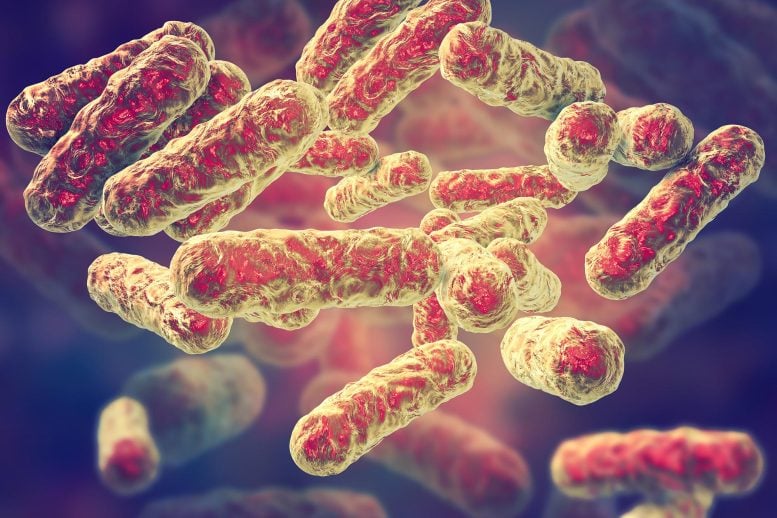
A new Bartonella species was discovered in Amazonian sand flies. Its close relation to Andean disease-causing species highlights the need for further investigation.
A previously unidentified species of bacteria belonging to the genus Bartonella has been detected in phlebotomine insects, commonly known as sand flies, within the Amazon National Park in Pará, Brazil. Sand flies are typically recognized as carriers of leishmaniasis, yet genetic testing revealed that the DNA of this new microorganism is closely related to two Andean species, B. bacilliformis and B. ancashensis. These bacteria are known to cause Carrión’s disease (also referred to as Oroya fever or Peruvian wart) and are transmitted by the same type of insect.
So far, there is no indication that this newly discovered bacterium causes illness in Brazil. Even so, because other Bartonella species are linked to several diseases worldwide, the researchers emphasize that more investigation is necessary.
The study was led by Marcos Rogério André in collaboration with Eunice Aparecida Bianchi Galati. Both are affiliated with Brazilian research institutions: the Faculty of Agricultural and Veterinary Sciences at São Paulo State University (FCAV-UNESP) in Jaboticabal, and the School of Public Health at the University of São Paulo (FSP-USP). Funding was provided by FAPESP through two projects (22/08543-2 and 22/16085-4).
The findings were published in the journal Acta Tropica with additional contributions from Paulo Vitor Cadina Arantes, Israel de Souza Pinto, Daniel Antônio Braga Lee, Anna Cláudia Baumel Mongruel, and Rosângela Zacarias Machado.
What is bartonellosis?
Bartonellosis refers to a group of diseases caused by bacteria from the genus Bartonella. These pathogens can be spread by several vectors, including sand flies, fleas, and lice.
Infections often take a long time to resolve in both humans and animals. The bacteria may remain undetected in the body for extended periods, which can worsen outcomes for people with existing immune system problems.
“Bartonellosis is a neglected disease. The disease best known to health professionals is cat scratch disease, caused by Bartonella henselae. It’s important to understand the real prevalence of these diseases, especially in isolated regions with low human development indices, where populations don’t have easy access to health services,” explains André.
The study aimed to detect the presence of Bartonella spp. DNA in 297 female sand flies (Diptera: Psychodidae) gathered from the Amazon National Park in Pará, Brazil. “This park has caves and receives many visitors, so it’s important to study it,” noted the researcher.
Fieldwork and sampling in the Amazon
Sample collection took place from February 2022 through February 2023. Each month, specimens were gathered along two trails situated near the Uruá and Tracoá rivers, both within the boundaries of the conservation unit.
“The discovery of Bartonella species in phlebotomine sand flies here in Brazil may indicate that B. bacilliformis and B. ancashensis, which cause Carrión’s disease or Peruvian wart, can adapt to non-Andean species and be transmitted in areas outside the Andes. This isn’t too much of an extrapolation, as two species that have been identified as vectors of B. bacilliformis, Pintomyia robusta and Pintomyia maranonensis in Peru, are very similar to species found in Brazil, namely Pintomyia serrana and Pintomyia nevesi,” explains Galati.
In recent years, the group has been studying the diversity of bacteria found in this genus and the diseases they cause in both humans and animals. According to the scientists, the sequences found in the Amazon differ from those found in Peru; however, the results corroborate data collected in a previous study.
Expanding research beyond Pará
According to André, this second article by the research group confirms evidence found in previous studies, such as the discovery of new species of Bartonella in Acre, another Brazilian state in the Amazon region. Therefore, they decided to expand the investigation and analyze samples from Pará and other locations.
“We’re detecting a strain here in Brazil that’s never been described and is very similar to two species of the Bartonella genus that cause disease in Andean countries. Despite this similarity, we don’t yet have information on whether it can cause disease with distinct symptoms. That’s why we need to study them further,” the professor points out.
To continue mapping the insects and the bacteria with which they may be infected, the researchers are collecting samples in various biomes.
“The next steps are to continue investigations involving more populations of phlebotomine sand flies and other diptera from different biomes in search of these strains, as well as to look for other strains,” says Galati.
Looking ahead: tracking reservoirs and health risks
According to the researcher, the next step would be to investigate what animals these insects feed on to find “reservoirs.”
“I have a project funded by FAPESP in which I was able to store many specimens of phlebotomine sand flies from the Atlantic Forest of São Paulo, and the idea is to explore this material in partnership with Professor André,” reveals Galati.
Although the results are preliminary, the project has helped the researchers uncover the possibility of finding disease agents that had not yet been detected.
According to André, since this is a new finding, it would be beneficial for doctors and researchers to collaborate on investigating this group of bacteria in individuals with fever of unknown origin.
“Could people with fever who are often sent home and who have repeated episodes of fever be infected with this pathogen? Could patients with Leishmania also be co-infected with this new species of Bartonella?” asks the professor.
Reference: “Molecular evidence of Bartonella spp. in sand flies (Diptera: Psychodidae) from the Brazilian Amazon” by Paulo Vitor Cadina Arantes, Israel de Souza Pinto, Daniel Antônio Braga Lee, Anna Claudia Baumel Mongruel, Eunice Aparecida Bianchi Galati, Rosangela Zacarias Machado and Marcos Rogério André, 29 May 2025, Acta Tropica.
DOI: 10.1016/j.actatropica.2025.107682
Funding was provided by FAPESP through two projects (22/08543-2 and 22/16085-4)
Never miss a breakthrough: Join the SciTechDaily newsletter.